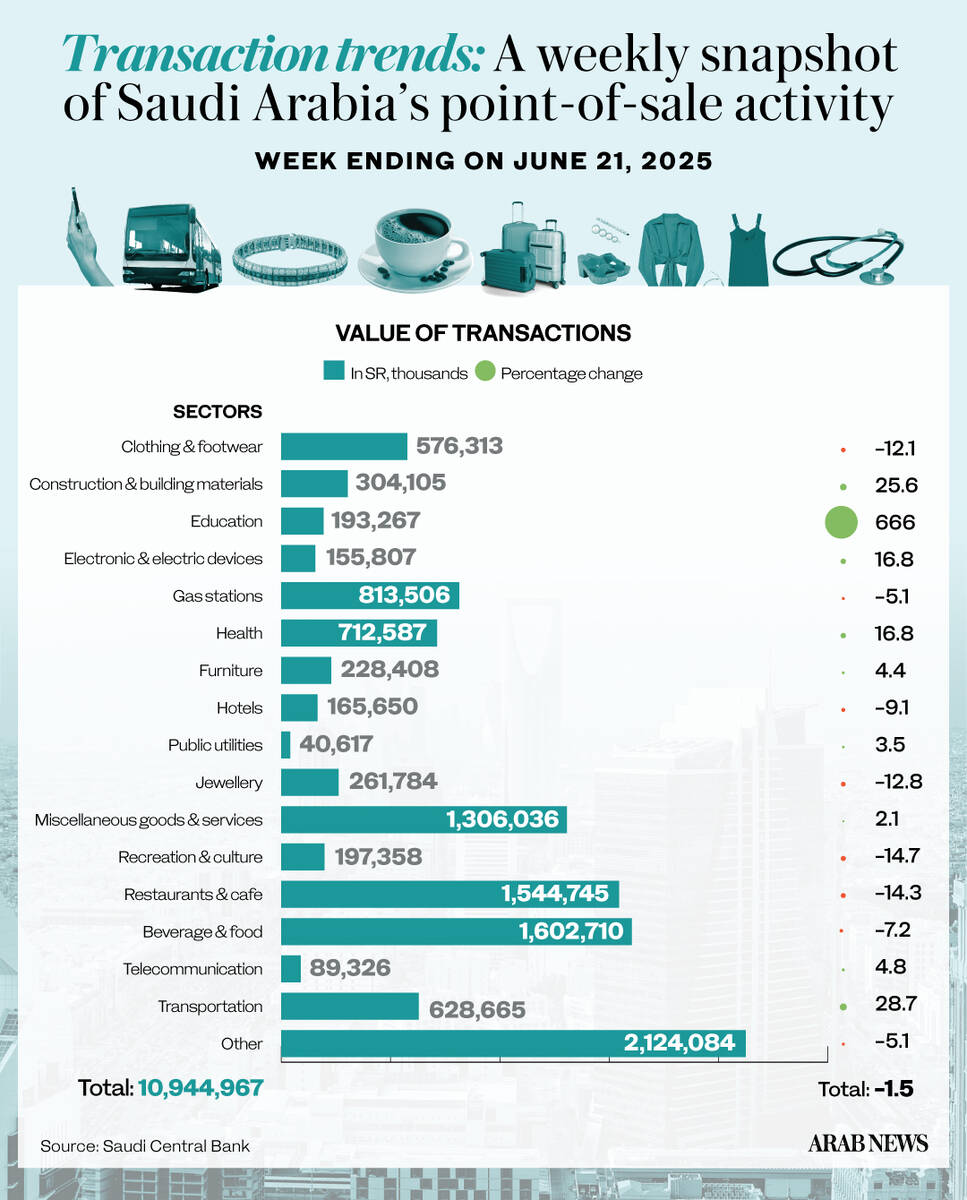RIYADH: Saudi Arabia plans to enhance its data platforms, strengthen digital transformation, and use artificial intelligence and modern technologies to improve statistical operations and data accuracy, according to a minister.
In his opening remarks at the first Saudi Statistics Forum held from April 27–28 in Riyadh, Economy and Planning Minister Faisal Al-Ibrahim said the Kingdom aims to build a modern, accessible, and globally competitive data ecosystem to support decision-making aligned with Vision 2030.
“In the coming phase, we will continue to develop data platforms, strengthen the digital transformation journey, and leverage administrative data, artificial intelligence, and modern technologies to further improve statistical operations, enhance data accuracy, and facilitate easier access to information,” Al-Ibrahim said.
He added: “Today, Saudi Arabia stands as an international platform for showcasing achievements, sharing success stories with the global community, accelerating the pace of development, and maximizing positive impact both locally and internationally in the field of statistics.”
The minister emphasized that the country will continue to develop administrative data systems and adopt modern technologies to improve the accuracy and accessibility of information across sectors.
The forum coincides with the 65th anniversary of establishing official statistical work in the Kingdom. This journey has witnessed the sector undergo transformative shifts toward higher quality and greater transparency.
“Transparency is crucial in supporting evidence-based decisions, especially given international challenges that highlight the need to develop statistical systems, adopt high-performance standards, and enhance the speed and efficiency of decision-making,” Al-Ibrahim.
He continued: “Today, many national and international statistical agencies and organizations are participating in this forum with the aim of transferring expertise, sharing pioneering experiences in statistical methodologies and best practices, and showcasing modern approaches to innovation and statistical development.”
The minister emphasized the crucial role of accurate, timely data in enabling evidence-based policymaking, particularly in the face of global challenges, and highlighted the need for resilient and agile statistical systems.
“Saudi Arabia today stands as an international platform for showcasing achievements, sharing success stories, and accelerating positive impact both locally and globally in the field of statistics,” Al-Ibrahim added.
The forum comes as Saudi Arabia prepares to host the Sixth UN World Data Forum in Riyadh in November 2026.
During the event, Fahad Al-Dossari, president of GASTAT, reiterated the authority’s commitment to supporting decision-makers by continuously developing the statistical system to meet national and international standards.
“Statistics are no longer merely supportive tools; today, they are at the heart of development work and a critical enabler of sustainable development, ensuring efficient spending, enhancing service quality, and supporting economic and social growth,” Al-Dossari said.
He noted that the authority has recently launched a number of strategic initiatives aimed at achieving full digital transformation in statistical operations, including promoting statistical innovation, enhancing the use of AI technologies, analyzing big data, and updating methodologies to align with best global practices.
As part of its efforts to meet rising demands for data in a rapidly evolving economy, GASTAT introduced around 39 new statistical products in 2023.
These products aim to deliver greater detail, broaden sector coverage, and enhance regional statistics to better inform both public policies and private sector investments.
Al-Dossari stressed that continuous collaboration between GASTAT and its partners in the government, private sector, and academic institutions is key to ensuring the success of Saudi Arabia’s broader data agenda.
He also highlighted the importance of national surveys as critical tools for expanding statistical coverage and providing timely indicators.

Minister of Industry and Mineral Resources Bandar Alkhorayef speaks at the event. AN photo
During a panel discussion, the role of data as a foundation for industrial development and economic diversification was further emphasized by Minister of Industry and Mineral Resources Bandar Alkhorayef.
“In the industrial sector, we cannot imagine that industry could thrive without infrastructure — whether in the form of industrial cities, energy supply, or other essential elements. Without this infrastructure, neither industry can grow nor investment be attracted,” Alkhorayef said
The minister underlined that Saudi Vision 2030 targets specific sectors that require precise, regularly updated data, allowing investors to accurately assess market conditions, identify opportunities, and anticipate trends.
Recognizing this, Saudi Arabia has taken proactive steps to institutionalize early technology adoption across sectors.
“Today, there is a massive abundance of data, and the key question is how we can harness it to serve decision-making processes and reduce associated risks,” Alkhorayef said.
He continued: “One of the risks we must be cautious about is relying on modern technologies without having accurate and trustworthy data sources, which can lead to misleading results despite the strength of the tools used.”
Therefore, here in the Kingdom, “we consider the early integration of technology as an essential part of all sectors.”
As technology reshapes the world of statistics, the nation is positioning itself at the forefront of innovation in data management.
Alkhorayef emphasized the growing global opportunity to harness AI and big data analytics to drive smarter decision-making.
However, he warned that relying on modern technologies without ensuring the accuracy and reliability of data can lead to misleading outcomes.
The Saudi Data and Artificial Intelligence Authority also plays a key role in regulating and accelerating the use of data technologies, striking a balance between strong legislative frameworks and rapid digital transformation efforts.
“SDAIA combines regulation and ensuring the proper development of technologies with accelerating their use to serve our national goals, whether to achieve the objectives of Vision 2030 or to support investors in accessing data quickly and mitigating investment risks,” Alkhorayef said.
He continued: “Thus, I believe the integrated system we see today positions the Kingdom as one of the best countries for attracting investments, thanks to the high level of reliability regarding opportunities and how to capitalize on them.”
During the forum, GATSTAT signed memorandums of understanding with four countries, including the UAE’s Federal Competitiveness and Statistics Centre, Qatar’s National Planning Council, Statistics Estonia, and Finland.
The MoUs aim to foster cooperation and facilitate the exchange of expertise in the field of statistics.






























